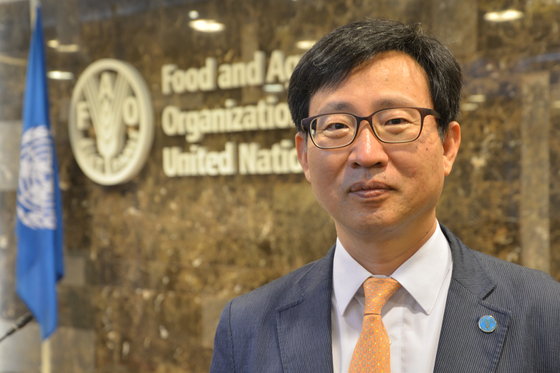Time to transform our agrifood systems

The author is an assistant director-general and regional representative for Asia and the Pacific of the Food and Agriculture Organization (FAO), the United Nations.
We live in a world full of conflicting interests and disagreements. But there is one underlying interest that we all share: having access to safe, affordable and nutritious food at all times. The question is, will there be enough food for all in not too distant future and will it be produced in sustainable way?
The answer is not so affirmative. Despite our common interest, this region — Asia and the Pacific — is backsliding into greater hunger and malnutrition. According to a recent UN report, the region is so off track that it will need an additional 35 years to achieve the Sustainable Development Goals.
Some of the descent is obvious. This year, we have seen severe droughts and floods, the highest food prices in decades, an armed conflict in Eastern Europe, and a lingering Covid-19 pandemic that continues to threaten public health, disrupt supply chains and livelihoods around the globe. Together, these have resulted in a crisis of five ‘Fs’ — the lack of food, feed, fuel, fertilizer and finance. Some analysts expect a reduction of cereal output next year due to fertilizer shortages in some countries in the Asia-Pacific region.
But even before these crises, successive annual reports of the FAO’s flagship publication, the State of Food Security and Nutrition, warned the fight against hunger and malnutrition was stalling and failing. In 2021, more than 400 million people in Asia-Pacific were malnourished, most of them in South Asia. In fact, of the billions of people in the region, 40 percent cannot afford a healthy diet.
For decades, as the world’s population grew, we took our eyes off the agrifood system — a complex and interdependent system of planting, harvesting, transporting, processing, marketing and consuming. As the world was producing enough food, there was little political appetite to upset the status quo.
The wakeup call came two years ago with the arrival of a Covid-19 pandemic. While food production didn’t come to a halt, the lockdowns and supply chain disruptions that followed took a serious toll on this interconnected system. For those of us in the Asia-Pacific region, the pandemic and fallout were happening in tandem with other gargantuan disruptions such as climate change, natural disasters and other types of hazards which account for 60 percent of global fatalities and 40 percent of economic losses.
We urgently needed to fix our agrifood system by transforming them to withstand external shocks and disruptions and use the crisis as an opportunity to make nutritious foods and healthy diets more accessible and affordable for all.
Last year, the UN Food Systems Summit in New York was the world’s first major attempt to move the agenda forward. The time has come to roll up our sleeves and build a better applecart in the region in particular though it may take longer than expected.
Governments and the private sector in the Asia-Pacific region must provide affordable solutions to the region’s stakeholders. While continuing their important role as a watchdog, civic groups must work more proactively with policymakers and the private sector. Academia also must accelerate its research to achieve this transformation.
More than 80 percent of the world’s smallholders and family farmers live off the land in this region and their interests and livelihoods must be safeguarded. Social safety nets and re-education programmes must be established to form an important part of this transformation.
The good news is that there are a plenty of available solutions, including a strengthening of actions to sustainably manage natural resources, enhance forest areas and restore landscapes. The Asia-Pacific region benefits from thousands of years of farming and hundreds of generations of traditional knowledge that could be coupled with a fast-growing entrepreneurial ecosystem.
For our part, FAO’s mission is to support the 2030 Agenda through helping member nations and partners to build more efficient, inclusive, resilient and sustainable agrifood systems for better production, better nutrition, better environment, and better life, leaving no one behind.
To get this region’s transformation underway, FAO is convening the Asia-Pacific Symposium on Agrifood Systems Transformation in Bangkok, Oct. 5-7 (in-person and virtual). The response has been impressive, with government ministers from many member nations signing up together with the private sector, academia and civic society.
No doubt this transformation will require massive public and private investment and the political determination to change. But if we choose to sit on our hands, even the target year of 2065 may be too early. Failing to transform our current agrifood systems is not an option but an imperative for our future.










with the Korea JoongAng Daily
To write comments, please log in to one of the accounts.
Standards Board Policy (0/250자)